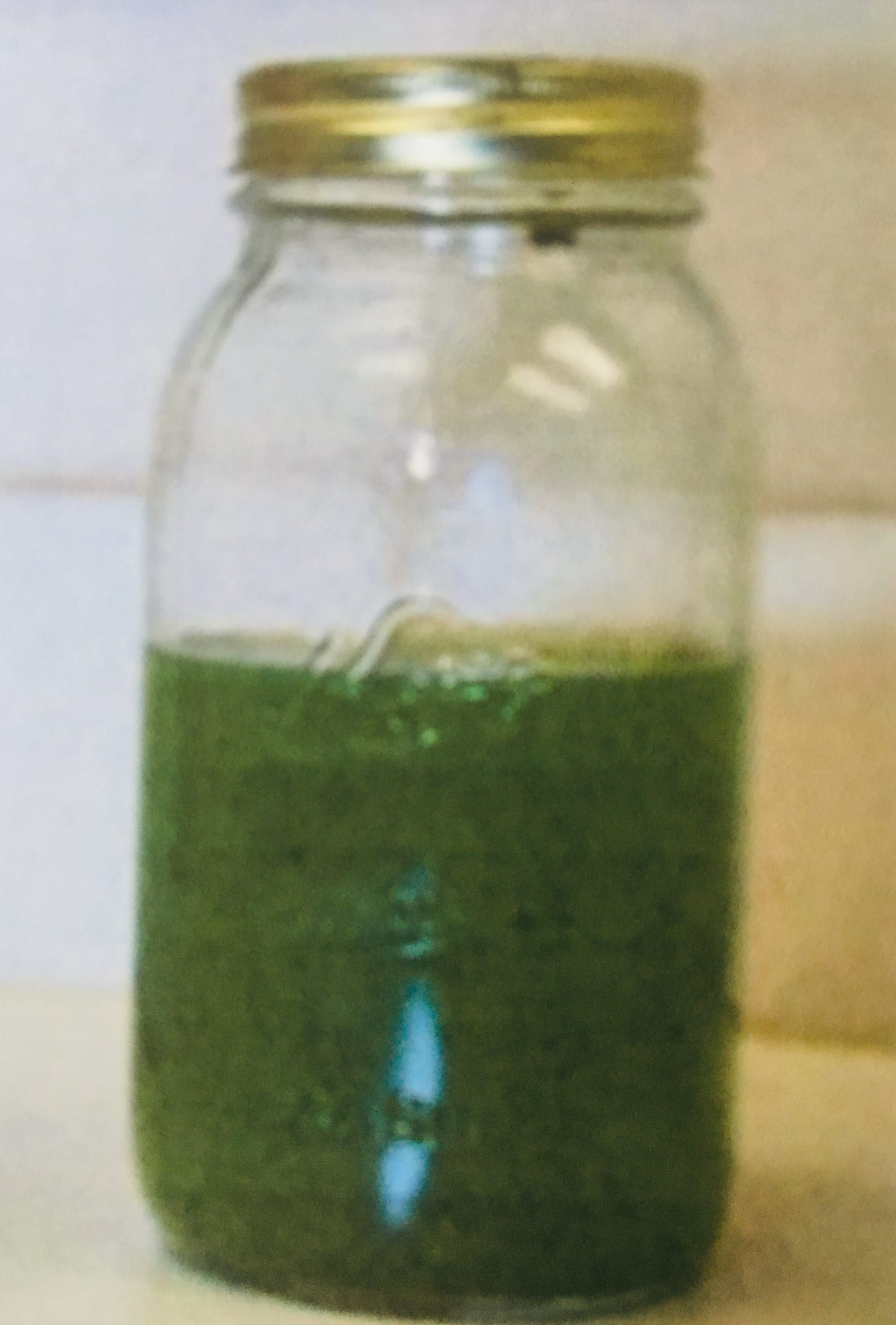Simple, no-cost tests for blue-green algae

The Jar Test
Materials:
- Clear pint to quart size jar with a screw top lid such as a canning jar or pickle jar with label removed
- Rubber or latex gloves
Procedure:
- With the gloves on, collect a sample just below the surface of the water (avoid collecting just the top layer of scum.
- Fill the jar about three-quearters full. Do not fill the jar completely; algae give off gases that may cause pressure buildup in the jar that could break it.
- Wipe any scum off the outside of the jar and screw the lid on.
- Put the jar in the refrigerator and leave it undisturbed overnight.
- Carefully remove the jar from the refrigerator and see where the algae has accumulated. Do not shake or agitate the jar at all or the algae willmix into the water again and negate your test results.
- If the algae are settled out near the bottom of the jar, it is likely that your lake does not have a lot of blue-green algae.
- If the algae have formed a green ring at the top of the water, there is a strong possibility that your lake does have a blue-green algae community.
The Stick Test
Materials:
- Sturdy stick, long enough to reach inbto the water without getting algae on your hands.
- Rubber or latex gloves
Procedure:
- With the gloves on, push the stick into the surface mat and slowly lift it out of the water.
- If the stick comes out looking like it has been dipped into a can of paint, the material is likely blue-green algae.
- If the stick comes out with green strands like hair or threads, the material is probably filamentous green algae, which may be a nuisance but is not a health hazard.
NOTE: The stick test can fail when a type of blue-green algae called Lyngbya wollei is present. This species can form tough filamentous mats that float to the surface, similar to mats formed by harmless filamentoursalgae. But Lyngbya wollei algae differentiate themselves with a putrid sewage-like odor and by sometimes releasing purple pigment in the water around them.
If your results indicate you have a blue-green bloom, please refer to the Blue-green algae and harmful algae blooms page on the MPCA website for tips to reduce the risk of exposure by your family and pets. Contact the MPCA's Water Quality Monitoring Line (651-757-2822) with questions about blue-green algae or the results of your tests.
If you suspect you or your pet has been exposed to blue-green algae toxins, contact your health care provider or veterinarian. Report any illnesses where the suspected cause is blue-green algae toxins to the MN Department of Health Foodborne and Waterborne Illness Hotline (877-366-3455 or health.foodill@state.mn.us).